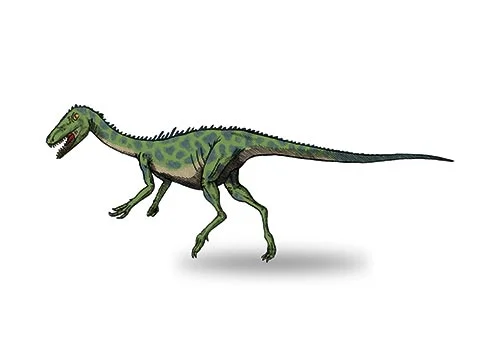Noasaurus (Northwestern Argetnina lizard)

No-ah-sore-us
J. F. Bonaparte & J. E. Powell - 1980
Carnivore
Estimated 2 meters long
Small Theropod
N. leali (type)
Argentina, Salta Province - Lecho Formation
Late Cretaceous, 85 million years ago
Noasaurus Facts
Noasaurus was a genus of small theropod dinosaur that lived during the Late Cretaceous period, approximately 85 million years ago. Its fossils were first discovered in northwestern Argentina, from which it derives its name.
The Northwestern Argentina lizard was a relatively small theropod, measuring around 2 meters (6.5 feet) in length and weighing around 15-20 kg (33-44 lbs). It had a slender body and long, thin legs, which suggest that it was a fast and agile runner.
One of the most distinctive features of Noasaurus was its reduced arms, which were much shorter than its legs and had three-fingered hands. This suggests that Noasaurus may have relied more heavily on its jaws and teeth for hunting and feeding than on its arms.
Noasaurus is known from several partial skeletons and isolated bones, which have provided valuable information about its anatomy and behavior. For example, its fossils suggest that it had a long, slender neck and a skull with large eye sockets and sharp teeth, which it likely used to hunt small animals such as lizards and mammals.
In conclusion, Noasaurus was a unique and interesting dinosaur that lived during the Late Cretaceous period in what is now Argentina. Its reduced arms, long legs, and sharp teeth are characteristic of the small theropods that thrived during this time, and its fossils provide valuable information about the diversity of life that existed on Earth millions of years ago. The study of dinosaurs like Noasaurus helps us to better understand the history of our planet, and the important role that paleontology plays in uncovering and understanding this history.



